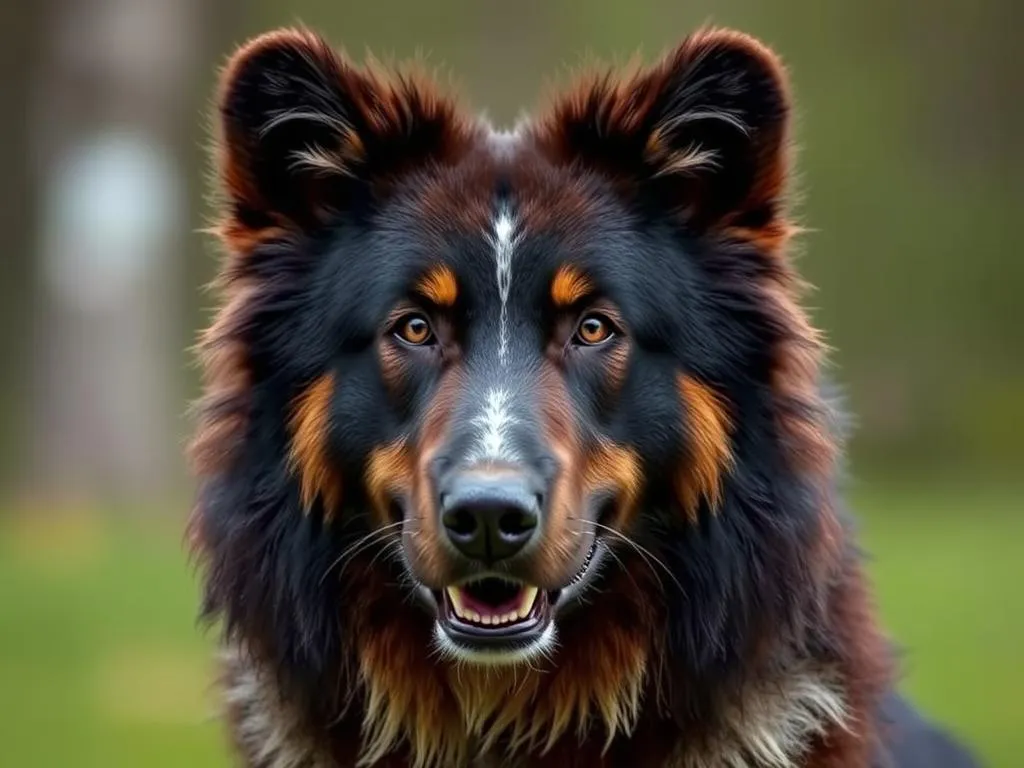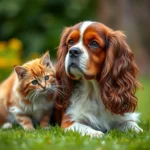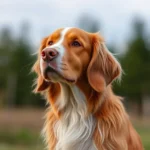
Introduction
When exploring the diverse world of dog breeds, each unique breed tells a story of heritage, purpose, and companionship. One such breed that stands out is the Karelian Bear Dog. Known for its striking appearance and remarkable abilities, this breed has captured the hearts of many dog enthusiasts. In this article, we will delve deep into the characteristics, history, care, and training of the Karelian Bear Dog, providing a thorough understanding of what makes this breed so special.
History of the Karelian Bear Dog
Origins and Ancestry
The Karelian Bear Dog originated from the regions of Finland and Russia, specifically the historical areas of Karelia. This breed has its roots in the ancient dogs used by indigenous peoples for hunting large game, including bears, moose, and wild boar. Renowned for their courage and tenacity, these dogs were vital companions to hunters, showcasing a natural instinct that has been honed over centuries.
Development Over Time
Through selective breeding, the Karelian Bear Dog evolved to enhance its hunting capabilities while retaining its powerful physique. The breed was recognized for its ability to track and corner large animals, making it indispensable to hunters. Major events, such as changes in hunting practices and the introduction of other breeds, have influenced the Karelian Bear Dog’s development, but the breed has largely remained true to its origins.
Recognition and Status
The Karelian Bear Dog gained official recognition from several kennel clubs, including the Fédération Cynologique Internationale (FCI) and, more recently, the American Kennel Club (AKC). Today, it enjoys a niche popularity, particularly among hunting enthusiasts and those who appreciate its unique traits. The breed’s distribution has expanded beyond its native lands, attracting dog lovers worldwide.
Physical Characteristics
Size and Build
The Karelian Bear Dog is a medium to large breed, with males typically standing between 22 to 26 inches at the shoulder and females slightly smaller, ranging from 20 to 24 inches. In terms of weight, males can weigh between 50 to 65 pounds, whereas females usually weigh around 40 to 55 pounds. This breed possesses a robust and muscular build, which reflects its working heritage, with well-defined muscles that contribute to its agility and endurance.
Coat and Color
The Karelian Bear Dog features a double coat, essential for insulation in cold climates. The outer coat is coarse and straight, while the undercoat is soft and dense. Common color variations include black and white, with some dogs exhibiting tan or brown markings. The breed’s distinctive coat not only adds to its aesthetic appeal but also serves a practical purpose in protecting it from harsh weather conditions.
Distinctive Features
One of the most recognizable traits of the Karelian Bear Dog is its erect, triangular ears and expressive eyes that convey intelligence and alertness. The breed’s tail is typically carried high and may curl over the back, adding to its striking appearance. Compared to similar breeds, such as the Finnish Laika, the Karelian Bear Dog is larger and possesses a more muscular build, making it a formidable presence in the field.
Temperament and Behavior
Personality Traits
The Karelian Bear Dog is known for its loyal and independent nature. This breed forms strong bonds with its family but can also exhibit a reserved demeanor with strangers. Its loyalty and protective instincts make it an excellent guardian, while its independent streak can pose challenges in training, as it may prefer to follow its instincts rather than commands.
Energy Levels and Activity Needs
This breed has high energy levels and requires significant daily exercise to maintain its physical and mental well-being. A minimum of 60 to 90 minutes of vigorous activity is recommended, which may include long walks, runs, or play sessions. Engaging in activities that stimulate both the mind and body, such as agility training or tracking, is particularly beneficial for the Karelian Bear Dog.
Training and Intelligence
The Karelian Bear Dog is intelligent and quick to learn, but its independent nature can make training a challenge. Consistent, positive reinforcement methods are essential for successful training. Early socialization is critical to help the dog become well-rounded and comfortable in various environments. Training should be approached with patience and creativity, incorporating interactive activities that keep the dog’s interest.
Health and Care
Common Health Issues
While generally healthy, the Karelian Bear Dog can be prone to certain breed-specific health concerns. Common issues include hip dysplasia, eye problems, and skin conditions. Regular veterinary check-ups and genetic testing can help identify potential health problems early. Responsible breeding practices are also crucial in minimizing health risks within the breed.
Nutrition and Diet
Proper nutrition is vital for the health and vitality of a Karelian Bear Dog. A balanced diet consisting of high-quality dog food formulated for active breeds is recommended. It’s essential to monitor their weight and adjust portions accordingly, as an overweight dog may face additional health issues. Consulting with a veterinarian can help determine the best dietary plan based on the dog’s age, size, and activity level.
Grooming Requirements
The Karelian Bear Dog has moderate grooming needs due to its double coat. Regular brushing is necessary to remove loose hair and minimize shedding, especially during seasonal changes when they may “blow” their coats. Bathing should be done only when necessary to avoid stripping the natural oils from their skin. During colder months, special attention should be paid to their paws and ears, ensuring they are protected from frostbite.
Living with a Karelian Bear Dog
Ideal Living Environment
The Karelian Bear Dog thrives in environments that provide ample space for exercise and exploration. While they can adapt to suburban living, they do best in rural areas where they can engage in their natural instincts. A secure, fenced yard is ideal, allowing the dog to roam freely and safely.
Family Dynamics
This breed is known to be good with children, displaying protective instincts and playfulness. However, supervision is recommended, particularly with younger children, to ensure safe interactions. The Karelian Bear Dog can coexist peacefully with other pets, especially if socialized from a young age, although its strong prey drive may lead to challenges with smaller animals.
Socialization Needs
Early socialization is critical for the Karelian Bear Dog. Exposing them to various environments, people, and other animals helps develop a well-adjusted adult dog. Puppy classes and playdates can provide valuable experiences, fostering confidence and adaptability. Consistent exposure to new situations will help mitigate any potential behavioral issues related to anxiety or fear.
Conclusion
The Karelian Bear Dog is a remarkable breed that embodies strength, loyalty, and intelligence. With a rich history rooted in hunting and herding, this breed offers a unique combination of traits that appeal to dog lovers and active families alike. However, potential owners should be aware of their specific needs regarding exercise, training, and socialization. By understanding and meeting these requirements, you can enjoy a rewarding and fulfilling relationship with this extraordinary dog.
In summary, the Karelian Bear Dog is not just a pet but a companion that thrives on companionship and activity. Whether you’re considering adding one to your family or simply want to learn more about this incredible breed, the Karelian Bear Dog is sure to leave a lasting impression.









